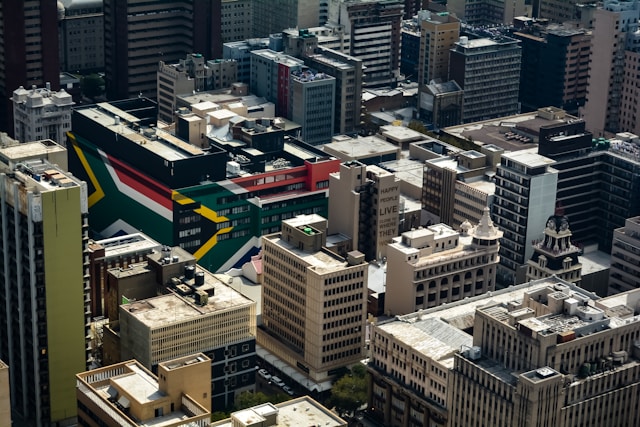I don’t think most people realise how strangely small the world of Reinsurance really is. It feels massive from the outside—big numbers, big risks, big boardrooms in Zurich or London—but the decisions made in those distant places somehow end up affecting what your cousin in Benoni pays for car insurance.
It’s a weird kind of butterfly effect. A hurricane in Florida flaps its metaphorical wings, and six months later your home premium creeps up “due to increased global risk factors.”
I’ve always been fascinated by that invisible chain reaction. Maybe it’s because, years ago, I sat in on a meeting where a reinsurer explained how a wildfire season in California would eventually impact underwriting strategies in South Africa. I remember blinking at the screen, thinking, “But… we’re not even on the same tectonic plate.”
And yet, that’s the way the industry works.
Why reinsurers care about disasters half a world away
Here’s the thing: Reinsurance is basically the insurance industry’s adult supervision. When local insurers take on too much risk—mass flooding, political unrest, three days of back-to-back hail in Gauteng—they lean on global reinsurers to absorb the shock.
But reinsurers aren’t just looking at South Africa. They’re looking at everything. If it’s burning, flooding, collapsing, shaking, or generally misbehaving anywhere on the planet, reinsurers feel it first.
And to be fair, the last few years have been… well, dramatic.
- Record heatwaves in Europe
- Hurricane seasons that seem to last half the year
- Flooding events that used to be “once in a century.”
- Earthquakes in places nobody expects earthquakes
It all adds up to higher global losses, and reinsurers price that into their contracts long before the average South African sees it in their monthly debit order.
So how does this actually land on your South African premium?
There’s no single moment when the price jumps. It’s more like a slow tightening of a belt.
When reinsurers increase their rates—usually in January, at renewals—local insurers feel the pinch. And because insurers aren’t charities (imagine if they were?), they adjust their own pricing to keep the books balanced.
It shows up in tiny, almost polite increases at first:
“Due to the current economic climate…”
“Based on updated risk projections…”
You know the email.
And then it becomes more obvious when a real event hits home. KwaZulu-Natal floods. Riots in 2021. A wildfire season that melts cars in Muizenberg parking lots. Suddenly the global models and the local reality overlap, and premiums climb a little more sharply.
I remember chatting to a broker in Durban last year who joked, “If reinsurers could underwrite the weather, we’d all be richer.” He wasn’t wrong.
Load shedding: the strange twist global reinsurers didn’t see coming
This is one of those odd tangents, but it matters.
Global reinsurers understand hurricanes and wildfires. They’ve modelled those for decades. But load shedding? Not really in their textbooks.
South Africa’s power crisis has created a unique category of risk—surge damage, burglary during outages, business interruption that has nothing to do with natural disasters. And because these claims stack up in unpredictable, messy ways, reinsurers quietly expand their “uncertainty margins.”
Uncertainty, in the world of reinsurance, is basically a four-letter word. And expensive.
So yes, global reinsurers price in international catastrophes, but they also adjust for our local… quirks.
Why South Africa sometimes gets hit harder than it feels it should
Here’s something most consumers never hear: South Africa is considered a “developing” but catastrophe-exposed market. Insurers love us for the premiums but worry about the volatility—crime rates, infrastructure issues, climate risk, political unrest, you name it.
When reinsurers assess a market like ours, they bundle together local instability plus global losses. The double whammy means our increases sometimes feel disproportionate.
I once heard someone say, “It’s like paying a share of the global disaster tax.”
That’s not entirely wrong.
A quiet trend: reinsurers are getting picky
Another subtle shift that affects us here is the tightening of reinsurance capacity. In simple terms, reinsurers are being more selective. They want better data, cleaner portfolios, fewer “messy” risks.
If an insurer can’t demonstrate strong risk management, reinsurers simply charge more—or reduce cover. And when your insurer pays more, well… you know the rest.
This is partly why South African insurers are suddenly obsessed with:
- detailed underwriting questions
- telematics
- home security conditions
- regular valuation updates
It’s not just admin. It’s survival.
A final thought that isn’t really a conclusion
Sometimes I think about that meeting years ago—the reinsurer showing those global loss maps with little red dots everywhere. It looked like a weather chart having a nervous breakdown. And yet, the people in that room weren’t panicking. They were calculating, adjusting, forecasting.
That’s the weird thing about reinsurance: it’s both terrifying and strangely orderly. The world burns, or floods, and someone updates a spreadsheet in Munich.
And eventually, your premium goes up.
Not because of anything you did, but because risk—global, local, shared—isn’t something that respects borders. It just moves, quietly, like pressure in a system. And every year, reinsurers decide how much pressure is acceptable.
The rest of us just… pay for it.









